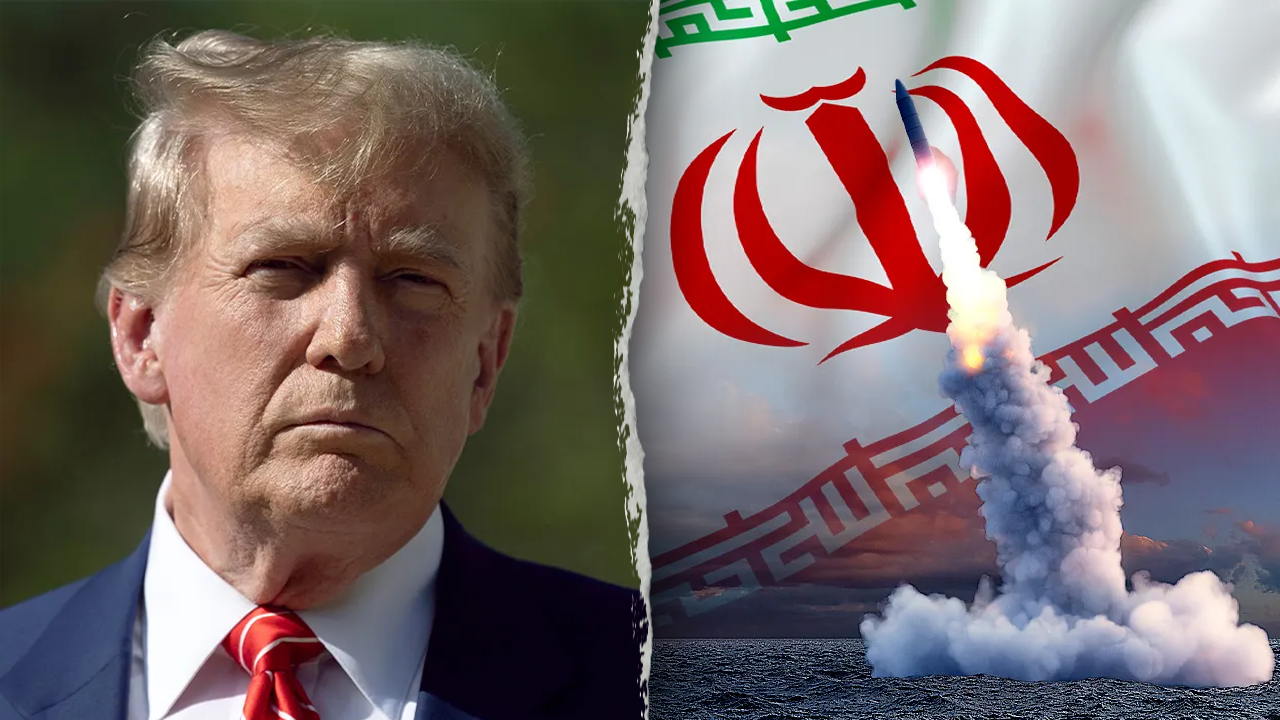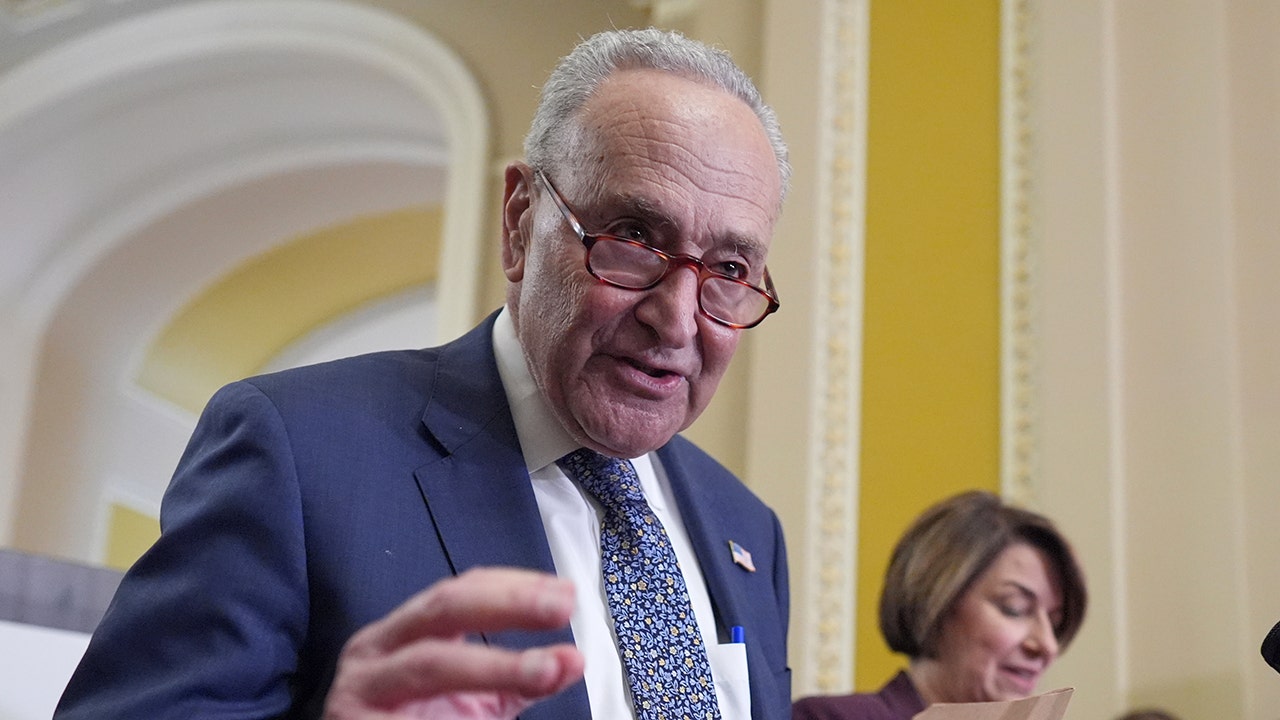Science
6 Great Space Images in October

It looks like cosmic Silly String or celestial spaghetti. What you’re really seeing is a confused space telescope. Europe’s Euclid spacecraft, which launched in July to study dark energy and dark matter, had difficulties with a sensor that uses stars for navigation. A software update has addressed the problem.
ESA/Euclid Consortium/TAS-I

Science
Column: RFK Jr. is dismantling trust in vaccines, the crown jewel of American public health

When it comes to vaccines, virtually nothing that comes out of Robert F. Kennedy Jr.’s mouth is true.
The man in charge of the nation’s health and well being is impervious to science, expertise and knowledge. His brand of arrogance is not just dangerous, it is lethal. Undermining trust in vaccines, he will have the blood of children around the world on his hands.
Scratch that.
He already does, as he presides over the second largest measles outbreak in this country since the disease was declared “eliminated” a quarter century ago.
“Vaccines have become a divisive issue in American politics,” Kennedy wrote the other day in a Wall Street Journal essay, “but there is one thing all parties can agree on: The U.S. faces a crisis of public trust.”
The lack of self-awareness would be funny if it weren’t so tragic.
Over the past two decades or so, Kennedy has done more than almost any other American to destroy the public’s trust in vaccines and science. And now he’s bemoaning the very thing he has helped cause.
Earlier this month, Kennedy fired the 17 medical and public health experts of the Centers for Disease Control and Prevention’s Advisory Committee on Immunization Practices — qualified doctors and public health experts — and replaced them with a group of (mostly) anti-vaxxers in order to pursue his relentless, ascientific crusade.
On Thursday, at its first meeting, his newly reconstituted council voted to ban the preservative thimerosal from the few remaining vaccines that contain it, despite many studies showing that thimerosal is safe. On that point, even the Food and Drug Administration website is blunt: “A robust body of peer-reviewed scientific studies conducted in the U.S. and other countries support the safety of thimerosal-containing vaccines.”
“If you searched the world wide, you could not find a less suitable person to be leading healthcare efforts in the United States or the world,” psychiatrist Allen Frances told NPR on Thursday. Frances, who chaired the task force that changed how the Diagnostic and Statistical Manual of Mental Disorders, or DSM, defines autism, published an essay in the New York Times on Monday explaining why the incidence of autism has increased but is neither an epidemic nor related to vaccines.
“The rapid rise in autism cases is not because of vaccines or environmental toxins,” Frances wrote, “but is rather the result of changes in the way that autism is defined and assessed — changes that I helped put into place.”
But Kennedy is not one to let the facts stand in the way of his cockamamie theories. Manufacturers long ago removed thimerosal from childhood vaccines because of unfounded fears it contained mercury that could accumulate in the brain and unfounded fears about a relationship between mercury and autism.
That did not stop one of Kennedy’s new council members, Lyn Redwood, who once led Children’s Health Defense, the anti-vaccine group founded by Kennedy, from declaring a victory for children.
“Removing a known neurotoxin from being injected into our most vulnerable population is a good place to start with making America healthy again,” Redwood told the committee.
Autism rates, by the way, have continued to climb despite the thimerosal ban. But fear not, gullible Americans, Kennedy has promised to pinpoint a cause for the complex condition by September!
Like his boss, Kennedy just makes stuff up.
On Wednesday, he halted a $1-billion American commitment to Gavi, an organization that provides vaccines to millions of children around the world, wrongly accusing the group of failing to investigate adverse reactions to the diptheria vaccine.
“This is utterly disastrous for children around the world and for public health,” Atul Gawande, a surgeon who worked in the Biden administration, told the New York Times.
Unilaterally, and contrary to the evidence, Kennedy decided to abandon the CDC recommendation that healthy pregnant women receive COVID vaccines. But an unvaccinated pregnant woman’s COVID infection can lead to serious health problems for her newborn. In fact, a study last year found that babies born to such mothers had “unusually high rates” of respiratory distress at or just after birth. According to the CDC, nearly 90% of babies who were hospitalized for COVID-19 had unvaccinated mothers. Also, vaccinated moms can pass protective antibodies to their fetuses, who will not be able to get a COVID shot until they are 6 months old.
What else? Oh yes: Kennedy once told podcaster Joe Rogan that the 1918 Spanish flu epidemic was “vaccine-induced flu” even though no flu vaccine existed at the time.
He also told Rogan that a 2003 study by physician scientist Michael Pichichero, an expert on the use of thimerosal in vaccines, involved feeding babies 6 months old and younger mercury-contaminated tuna sandwiches, and that 64 days later, the mercury was still in their system. “Who would do that?” Kennedy demanded.
Well, no one.
In the study, 40 babies were injected with vaccines containing thimerosal, while a control group of 21 babies got shots that did not contain the preservative. None was fed tuna. Ethylmercury, the form of mercury in thimerosal, the researchers concluded, “seems to be eliminated from blood rapidly via the stools.” (BTW, the mercury found in fish is methylmercury, a different chemical, which can damage the brain and nervous system. In a 2012 deposition for his divorce, which was revealed last year, Kennedy said he suffered memory loss and brain fog from mercury poisoning caused by eating too much tuna fish. He also revealed he has a dead worm in his brain.)
Kennedy’s tuna sandwich anecdote on Rogan’s podcast was “a ChatGPT-level of hallucination,” said Morgan McSweeney, a.k.a. “Dr. Noc,” a scientist with a doctorate in pharmaceutical sciences, focusing on immunology and antibodies. McSweeney debunks the idiotic medical claims of non-scientists like Kennedy in his popular social media videos.
Speaking of AI hallucinations, on Tuesday, at a congressional committee hearing, Kennedy was questioned about inaccuracies, misinformation and made up research and citations for nonexistent studies in the first report from his Make America Healthy Again Commission.
The report focused on how American children are being harmed by their poor diets, exposure to environmental toxins and, predictably, over-vaccination. It was immediately savaged by experts. “This is not an evidence-based report, and for all practical purposes, it should be junked at this point,” Georges C. Benjamin, executive director of the American Public Health Assn. told the Washington Post.
If Kennedy was sincere about improving the health of American children he would focus on combating real scourges like gun violence, drug overdoses, depression, poverty and lack of access to preventive healthcare. He would be fighting the proposed cuts to Medicaid tooth and nail.
Do you suppose he even knows that over the past 50 years, the lives of an estimated 154 million children have been saved by vaccines?
Or that he cares?
@rabcarian.bsky.social
@rabcarian
Science
Hims & Hers' ugly split with Wegovy maker weighs on the telehealth company's future

Hims & Hers, the high-flying telehealth company that rapidly ascended from a buzzy startup selling Viagra to a multibillion-dollar business with a Super Bowl ad, had a hard week.
The San Francisco company’s shares took a dive Monday after its partnership with Novo Nordisk crumbled. The Danish drugmaker abruptly ended its agreement to let Hims & Hers directly sell its popular weight-loss drug, prompting the companies to spar publicly.
Less than two months after agreeing to partner with Hims & Hers, Novo Nordisk accused the telehealth company of putting patient safety at risk through “deceptive” marketing and selling a knockoff version of its drug Wegovy. Hims & Hers fired back, alleging that Novo Nordisk was “misleading the public” and wanted to “control clinical standards and steer patients to Wegovy.”
The messy split is the latest hurdle facing Hims & Hers, a platform where people subscribe to get help for hair loss, improve sex, lose weight and address other health problems. The company aims to reach $6.5 billion in revenue by 2030. The tussle also highlights the tensions between telehealth platforms and pharmaceutical companies.
“The termination of this partnership suggests that Novo still views Hims’ marketing and sales tactics as a threat to branded Wegovy and indicates Novo considers Hims more of a competitor than a true partner,” Aaron DeGagne, a senior analyst of healthcare at PitchBook, said in a statement.
Hims & Hers’ stock price has swung wildly this year. The price had at one point soared more than 150% this year before the Novo split knocked off a nearly a third of its valuation on Monday. Its share price rose nearly 7% on Friday to end the week at $49.41.
Hims & Hers is disrupting the healthcare industry, testing the limits of regulations to make it easier to buy popular drugs at lower prices. Its showdown with Novo could help define how far it can go.
While Hims & Hers faces more legal risks after the breakup, some analysts said they don’t expect the fallout to heavily harm the company’s growth. The company is expanding beyond just treating weight loss. Still, Hims & Hers is losing a potential source of revenue.
“Even with all these revenue streams, the bigger concern (rightfully so) is the ability for these revenue streams to fill the expected hole that the end of the NovoCare partnership creates,” Michael Cherny, a senior research analyst at Leerink Partners, said in a note.
NovoCare is the pharmacy people were able to access on the Hims & Hers platform to buy the weight-loss drug.
Last year, Hims & Hers said in a letter to shareholders that the company expects its weight loss offerings will contribute at least $725 million of revenue in 2025 but that treatments outside of that category will make up the majority of its sales. Wegovy is just one weight-loss drug it offers.
Drug disruptor
Launched in 2017, Hims initially focused on treating men’s health issues such as hair loss and erectile dysfunction — concerns that people might feel too embarrassed to bring up in doctor visits. Instead, subscribers answer questions online, correspond with medical professionals virtually and get the prescribed drugs in visually pleasing packages delivered discreetly to their homes.
Andrew Dudum, one of the company’s co-founders and its chief executive, started Hims at venture studio Atomic in San Francisco. The startup, now known as Hims & Hers Health Inc., then expanded into women’s health, went public in 2021 and grew its workforce to more than 1,600 workers.
Hims & Hers’ annual revenue grew from $148.8 million in 2020 to $1.48 billion in 2024. The company also became profitable with its net income reaching $126 million in 2024, compared with a loss of $18 million in 2020. The company forecasts it will reach between $2.3 billion and $2.4 billion in revenue this year.
The company’s growth and 2.4 million-subscriber base was turbocharged as people looked for easier access and affordable options to the wildly popular weight-loss drugs Wegovy and Ozempic.
Despite strong results in the first quarter of this year, the company’s forecast for second-quarter revenue fell below analysts’ expectations. In May, Hims & Hers said it was slashing more than 4% of its workforce after signaling it would move away from selling cheaper alternatives to weight-loss drugs.
Its stock had initially surged in February after the company released a controversial Super Bowl ad promoting its treatment for weight loss. The ad marketed the telehealth platform as an affordable solution to a system that is “built to keep us sick and stuck.”
But the company’s aggressive marketing triggered backlash. Doctors, politicians and drugmakers quickly criticized the company for not disclosing the risks associated with the compounded drugs that Hims & Hers sometimes uses for weight loss.
With compounded drugs, licensed pharmacists alter, mix or combine ingredients of a drug to customize medicines. Though copying patented drugs is illegal, compounded knockoffs are allowed if they are tailored for a patient who might need something slightly different than what the patent-holding company produces. For example, a person might take a compounded drug if they’re allergic to a certain dye.
Taking compounded drugs comes with risks, according to the U.S. Food and Drug Administration. Unlike generics, they’re not approved by the FDA, a federal agency that verifies whether drugs are safe and effective .
Compounding drugs is also allowed when there’s a shortage of an FDA-approved drug, which has happened with Wegovy and Ozempic. But those drugs are no longer in shortage, and the FDA has warned the public about taking compounded drugs when it isn’t medically necessary.
Drug war erupts
The fallout between Hims & Hers and Novo Nordisk centers on its sales of compounded versions of Wegovy, a drug people inject to decrease hunger so they eat less and lose weight.
In April, the two companies teamed up to make obesity treatment more affordable and accessible. Starting at $599 per month, some people were able to get prescribed to Wegovy and a Hims & Hers membership. That was much cheaper than the previous cost of paying $1,999 per month for Wegovy on the Hims & Hers platform.
That partnership was short-lived. Novo Nordisk said this week that it’s cutting off Hims & Hers’ direct access to Wegovy.
“Hims & Hers Health, Inc. has failed to adhere to the law which prohibits mass sales of compounded drugs under the false guise of ‘personalization’ and are disseminating deceptive marketing that put patient safety at risk,” Novo Nordisk said in a statement.
Hims & Hers advertises a compounded drug that contains the same ingredients in Wegovy for $165 per month.
Novo Nordisk, citing its own investigation and a Brookings Institution report, said ingredients in knock-off drugs sold by telehealth entities and compounding pharmacies are manufactured in China and do not have FDA approval.
Novo Nordisk sells Wegovy through its pharmacy NovoCare and telehealth platforms LifeMD and Ro. On Thursday, the company also announced a partnership with WeightWatchers to sell Wegovy at a discounted price in July.
Dudum, Hims & Hers chief executive, said on social media site X that the telehealth provider would still provide a variety of treatments including Wegovy. The company says on its website that it works with pharmacies in Arizona and Ohio that are regulated.
“We refuse to be strong-armed by any pharmaceutical company’s anticompetitive demands that infringe on the independent decision making of providers and limit patient choice,” he said in the statement.
Science
After U.S. and Israeli Strikes, Could Iran Make a Nuclear Bomb?

Sustain nuclear expertise
Likely harmed
Before strikes
Over the decades, Iran built up scientific and engineering expertise in nuclear technology.
After
Israel says it killed at least 14 of Iran’s leading nuclear experts in the recent attacks. But there is another tier of scientists in Iran who share much of that knowledge. If past experience from previous assassinations of nuclear talent holds, over time, they will likely be able to carry on the work.
Sustain nuclear expertise
Likely harmed
Before strikes
Over the decades, Iran built up scientific and engineering expertise in nuclear technology.
After
Israel says it killed at least 14 of Iran’s leading nuclear experts in the recent attacks. But there is another tier of scientists in Iran who share much of that knowledge. If past experience from previous assassinations of nuclear talent holds, over time, they will likely be able to carry on the work.
Mine uranium ore
Appears unaffected
Before strikes
Iran has two active uranium mines, both in central Iran. Iran has not reported how much it has mined in recent years, but the material, it says, is contained in one of the mines, Narigan, would be enough for more than 50 weapons.
After
Iran’s uranium mines have not been targeted by strikes during the fighting.
Mine uranium ore
Appears unaffected
Before strikes
Iran has two active uranium mines, both in central Iran. Iran has not reported how much it has mined in recent years, but the material, it says, is contained in one of the mines, Narigan, would be enough for more than 50 weapons.
After
Iran’s uranium mines have not been targeted by strikes during the fighting.
Convert uranium to gas
Possibly destroyed
Before strikes
The only known facility in Iran that could convert natural uranium into gas, in the form of uranium hexafluoride, was in Isfahan.
After
American missiles severely damaged Iran’s main uranium conversion site, most likely destroying Iran’s ability to convert natural uranium into the form required to start the enrichment process. Rebuilding could take years.
Convert uranium to gas
Possibly destroyed
Before strikes
The only known facility in Iran that could convert natural uranium into gas, in the form of uranium hexafluoride, was in Isfahan.
After
American missiles severely damaged Iran’s main uranium conversion site, most likely destroying Iran’s ability to convert natural uranium into the form required to start the enrichment process. Rebuilding could take years.
Enrich uranium
Damaged but extent unclear
Before strikes
This is the hardest part of making a nuclear bomb. Producing bomb-grade uranium requires vast arrays of high-speed centrifuges to spin the uranium gas and concentrate the enriched form. Iran’s Natanz and Fordo sites held more than 18,000 centrifuges, mostly underground.
After
Israel most likely destroyed all the centrifuges at Natanz. And the head of the International Atomic Energy Agency said the centrifuges at Fordo, Iran’s other major enrichment site built deep inside a mountain, appeared “no longer operational” after the U.S. attack. Trump said the facility was “obliterated,” though other assessments were more cautious. Israel also destroyed plants that manufactured centrifuges.
Iran has claimed it has other, secret enrichment facilities. But there is no evidence that other operational enrichment sites exist. Iran has also been assembling advanced, next-generation centrifuges at dispersed locations and, unless diplomacy or military action intervenes, may install them at two underground facilities it has been building.
Enrich uranium
Damaged but extent unclear
Before strikes
This is the hardest part of making a nuclear bomb. Producing bomb-grade uranium requires vast arrays of high-speed centrifuges to spin the uranium gas and concentrate the enriched form. Iran’s Natanz and Fordo sites held more than 18,000 centrifuges, mostly underground.
After
Israel most likely destroyed all the centrifuges at Natanz. And the head of the International Atomic Energy Agency said the centrifuges at Fordo, Iran’s other major enrichment site built deep inside a mountain, appeared “no longer operational” after the U.S. attack. Trump said the facility was “obliterated,” though other assessments were more cautious. Israel also destroyed plants that manufactured centrifuges.
Iran has claimed it has other, secret enrichment facilities. But there is no evidence that other operational enrichment sites exist. Iran has also been assembling advanced, next-generation centrifuges at dispersed locations and, unless diplomacy or military action intervenes, may install them at two underground facilities it has been building.
Store the enriched uranium
Probably still exists
Before strikes
International inspectors estimated this year that Iran had just shy of 900 pounds of nearly bomb-grade uranium. Inspectors last saw some of the stockpile about a week before Israel began its strikes. At that time, it was stored deep inside a nuclear complex near Isfahan in special casks small enough to fit in the trunks of about 10 cars.
Once further enriched, this stockpile would be enough to make nine or 10 atomic weapons, but U.S. intelligence agencies assessed that Iran had not decided whether to make a bomb.
After
A classified U.S. report said that much of Iran’s stockpile of enriched uranium was moved before the strikes. The White House has insisted that it was destroyed but cited no evidence. The I.A.E.A. and European intelligence agencies believe Iran likely dispersed its stockpiles of enriched uranium around the country.
The uranium of greatest concern has already been enriched to a purity of 60 percent, greatly shortening the time required to bring it to 90 percent, which is usually considered weapons-grade fuel. But to do so would require some hidden, working centrifuges.
Store the enriched uranium
Probably still exists
Before strikes
International inspectors estimated this year that Iran had just shy of 900 pounds of nearly bomb-grade uranium. Inspectors last saw some of the stockpile about a week before Israel began its strikes. At that time, it was stored deep inside a nuclear complex near Isfahan in special casks small enough to fit in the trunks of about 10 cars.
Once further enriched, this stockpile would be enough to make nine or 10 atomic weapons, but U.S. intelligence agencies assessed that Iran had not decided whether to make a bomb.
After
A classified U.S. report said that much of Iran’s stockpile of enriched uranium was moved before the strikes. The White House has insisted that it was destroyed but cited no evidence. The I.A.E.A. and European intelligence agencies believe Iran likely dispersed its stockpiles of enriched uranium around the country.
The uranium of greatest concern has already been enriched to a purity of 60 percent, greatly shortening the time required to bring it to 90 percent, which is usually considered weapons-grade fuel. But to do so would require some hidden, working centrifuges.
Convert enriched uranium to metal
Possibly destroyed
Before strikes
Iran had one known facility to convert enriched uranium back into its solid metal state — a critical step before it can be used in a weapon.
After
Israel destroyed Iran’s uranium metal production facility at Isfahan. Without this important capability, Iran cannot make an atomic bomb. However, one expert cautioned that Iran has produced uranium metal at other locations before, and it may have a secret site to conduct the work elsewhere.
Convert enriched uranium to metal
Possibly destroyed
Before strikes
Iran had one known facility to convert enriched uranium back into its solid metal state — a critical step before it can be used in a weapon.
After
Israel destroyed Iran’s uranium metal production facility at Isfahan. Without this important capability, Iran cannot make an atomic bomb. However, one expert cautioned that Iran has produced uranium metal at other locations before, and it may have a secret site to conduct the work elsewhere.
Make a bomb
Likely damaged
Before strikes
To build a modern atomic weapon with the metal, Iran would need to miniaturize crucial components, such as the detonator system, to fit into a missile-capable warhead. It is unclear whether Iran has this capability, but experts believe it has made some progress, and it is thought to have experimented with triggering devices. American intelligence agencies concluded last year that Iran was working on a “faster, cruder” approach to a weapon.
After
Israel destroyed several buildings at the Sanjarian manufacturing facility that were associated with the development of detonation systems and explosives, but Iran may have other similar facilities.
Make a bomb
Likely damaged
Before strikes
To build a modern atomic weapon with the metal, Iran would need to miniaturize crucial components, such as the detonator system, to fit into a missile-capable warhead. It is unclear whether Iran has this capability, but experts believe it has made some progress, and it is thought to have experimented with triggering devices. American intelligence agencies concluded last year that Iran was working on a “faster, cruder” approach to a weapon.
After
Israel destroyed several buildings at the Sanjarian manufacturing facility that were associated with the development of detonation systems and explosives, but Iran may have other similar facilities.
Deliver a weapon
Still possible
Before strikes
With a weapon, Iran could conduct a nuclear test, as North Korea first did in 2006. There are many ways to deliver a weapon, but if it wants to strike a target from afar, it needs planes or missiles to deliver it. Until recently it had thousands of missiles, many of which could carry an atomic weapon.
After
Israel claims to have destroyed hundreds of Iran’s missile launchers, but is unlikely to have completely wiped out Iran’s ability to fire a nuclear-capable missile.
Deliver a weapon
Still possible
Before strikes
With a weapon, Iran could conduct a nuclear test, as North Korea first did in 2006. There are many ways to deliver a weapon, but if it wants to strike a target from afar, it needs planes or missiles to deliver it. Until recently it had thousands of missiles, many of which could carry an atomic weapon.
After
Israel claims to have destroyed hundreds of Iran’s missile launchers, but is unlikely to have completely wiped out Iran’s ability to fire a nuclear-capable missile.
-

 Business1 week ago
Business1 week agoDriverless disruption: Tech titans gird for robotaxi wars with new factory and territories
-

 Technology1 week ago
Technology1 week agoMeta held talks to buy Thinking Machines, Perplexity, and Safe Superintelligence
-

 Technology1 week ago
Technology1 week agoSpaceX Starship explodes again, this time on the ground
-

 Technology1 week ago
Technology1 week agoSamsung’s Galaxy Watch 7 has returned to its lowest-ever price
-

 Movie Reviews1 week ago
Movie Reviews1 week ago‘8 Vasantalu’ movie review: Phanindra Narsetti’s romance drama is ambitious but lacks soul
-

 Education7 days ago
Education7 days agoHere Is All the Science at Risk in Trump’s Clash With Harvard
-

 Politics1 week ago
Politics1 week agoTrump demands special prosecutor investigate 'stolen' 2020 election, loss to Biden
-

 Technology7 days ago
Technology7 days agoTesla’s robotaxi is live: here are some of the first reactions















